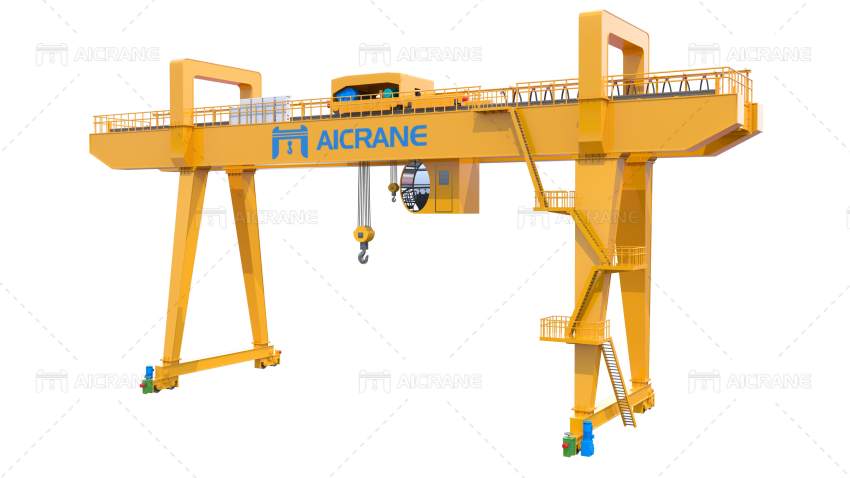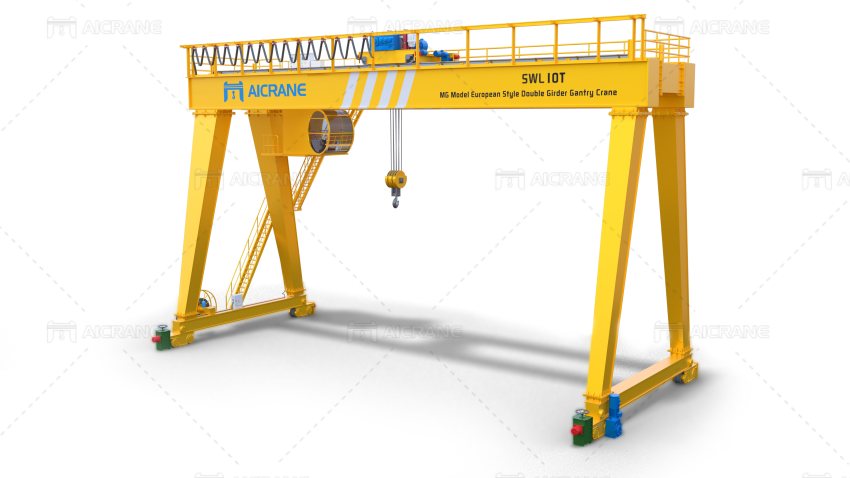Single girder and double girder gantry cranes are both types of overhead cranes used for material handling in various industries. Here are some of the differences between the two types of gantry cranes:
Load capacity: Double girder gantry cranes have a higher load capacity than single girder gantry cranes. Double girder gantry cranes are able to handle heavier loads due to their stronger structure and the use of two girders, while single girder gantry cranes are typically used for lighter loads.
Span: Double girder gantry cranes have a greater span than single girder gantry cranes, which means they can cover a larger area. This makes double girder gantry cranes more suitable for outdoor applications, such as loading and unloading cargo at ports.

Height: Double girder gantry cranes can be designed to have a greater height than single girder gantry cranes, which makes them suitable for handling materials in tall buildings or other structures.
Cost: Single girder gantry cranes are typically less expensive than double girder gantry cranes due to their simpler design and lower load capacity.
Maintenance: Double girder gantry cranes require more maintenance than single girder gantry cranes due to the use of two girders and additional components, which may increase the cost of ownership over time.
Overall, the choice between a single girder and double girder gantry crane will depend on the specific needs of the application. Single girder gantry cranes are suitable for lighter loads and shorter spans, while double girder gantry cranes are more suitable for heavier loads and longer spans. However, double girder gantry cranes come at a higher cost and require more maintenance, which may be a consideration when selecting the appropriate gantry crane.

Double Girder Gantry Crane Operation Methods
Double girder gantry cranes are operated using a variety of methods, depending on the specific application and the control system installed on the crane. Here are some common methods of operating a double girder gantry crane:
Pendant control: Pendant control is a handheld control device that allows the operator to control the movement of the crane from a safe distance. The pendant control is connected to the crane by a cable, and the operator can use the buttons on the pendant to move the crane forward and backward, left and right, and up and down.
Radio remote control: Radio remote control is a wireless control system that allows the operator to control the crane from a safe distance. The radio remote control is equipped with a transmitter that sends signals to a receiver on the crane, which then controls the movement of the crane.
Cabin control: Cabin control is a control system that is installed in a cabin located on the crane itself. The operator can control the movement of the crane using buttons and levers located in the cabin.
Automated control: Automated control systems use sensors and software to control the movement of the crane automatically. These systems are typically used in industrial settings where the movement of the crane needs to be precise and repetitive.
It is important to ensure that the operator of the double girder gantry crane is trained and qualified to operate the crane using the chosen method. The operator should also be familiar with the safety procedures and emergency protocols for the specific application.